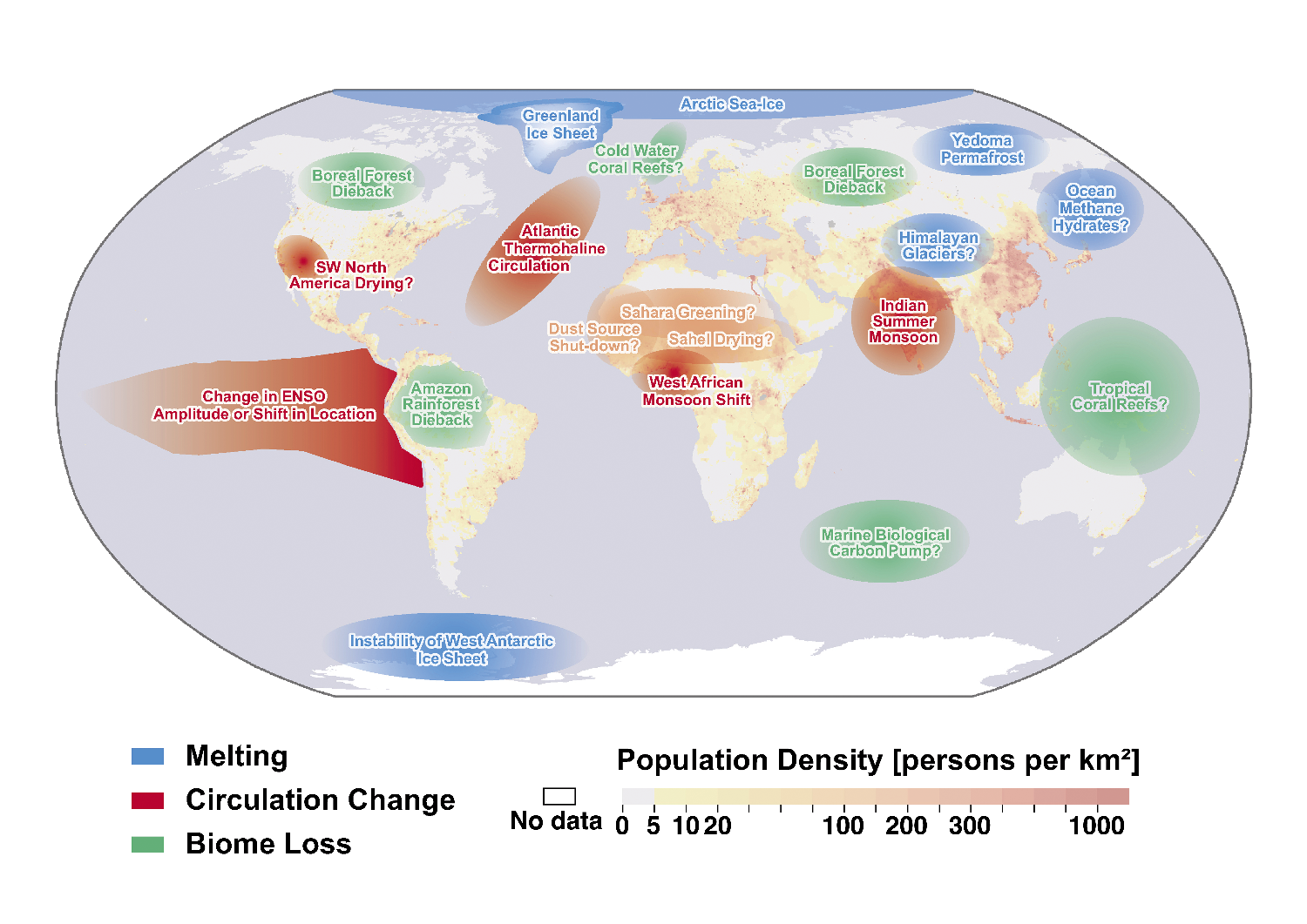- Home
- Publications
- PAGES Magazine
- Earth System Models - How Well Do Earth System Models Simulate The Dynamics of Global Change? [Present]
Earth system models - How well do Earth system models simulate the dynamics of global change? [Present]
Tim Lenton
PAGES news
20(1)
8
2012
Tim Lenton
College of Life and Environmental Sciences, University of Exeter, UK; t.m.lenton exeter.ac.uk
exeter.ac.uk
How well can Earth system models simulate the dynamics of global change? Well, if we wait long enough, we’ll find out. But by then the models being judged will be deemed out-of-date and the latest models will be argued to be far superior! Recently models have under-predicted the rate of global warming and sea-level rise (Rahmstorf et al. 2007), and have failed to forecast the abruptness of Arctic sea-ice retreat (Stroeve et al. 2007) or the start of ocean de-oxygenation. This does not bode well.
When the dynamics of global change are basically linear – that is, the response is proportional to some forcing – and the forcing and response are accurately captured, the models should do a good job. Global warming in response to radiative forcing would be a great example, if only the radiative forcing effects of aerosols and the climate sensitivity to a given radiative forcing were not both highly uncertain (see pages 10/11 and 20/21 of this issue). The best way to reduce this uncertainty is to continue to reduce aerosol forcing and wait to see the climate response.
The prediction problem gets more difficult when the dynamics of change could be highly non-linear. Current global models struggle to capture potential climate “tipping points” at sub-continental scales (Fig. 1) (Lenton et al. 2008). For example, observations support the theory that the Atlantic meridional overturning circulation is “bi-stable” with an alternative collapsed state stable under the present climate, which it could conceivably be tipped into (Drijfhout et al. 2011). Yet the last generation of models were systematically biased, with just one stable ocean circulation state (Drijfhout et al. 2011), so it is no surprise that they did not forecast the possibility of future collapse (IPCC 2007).
Sometimes key processes or systems are simply missing from the models. Collective inability to put a number on the future contribution of ice sheets to sea-level rise (IPCC 2007) has provoked a welcome revolution in the modeling of ice-sheet dynamics. But we must be wary of the “kitchen sink” tendency to keep putting more and more into Earth system models. Increasing complexity has been sold on the argument that it will reduce uncertainty in future projections, but it was never going to do that. Uncertainty has predictably increased as more forcing agents, couplings and feedbacks have been added to the models.
Century-scale runs with multiple simultaneous forcing agents and feedbacks are important for policymakers, but not the most scientifically informative if one wants to isolate the effects of a particular forcing or feedback, or attribute the causes of a particular change. What we need is a new way of using models together with available data to bridge the widening gap between predictive modeling and mechanistic understanding. The ocean overturning example highlights the need to recalibrate models using available data to get their stability properties right. But this is not just an initial condition problem; it will involve altering the parameters and even the processes in the models.
Earth system models are still at heart climate models with bits added on. This is of course sensible if – as many of us believe – climate change is the most dangerous global change that we as a species are driving. But it is worth considering the possibility that another global change might turn out to be more important. If, for example, our rampant mining of phosphates and fixing of nitrogen could ultimately trigger a global oceanic anoxic event, do we have a well-posed tool to assess this? Century-scale climate models are clearly inappropriate. Intermediate complexity models may be better posed. But I still see a need for truly ”Earth system” models that can help define all of our planetary boundaries (Rockström et al. 2009).
selected references
Full reference list online under: http://pastglobalchanges.org/products/newsletters/ref2012_1.pdf
Drijfhout S, Weber S and van der Swaluw E (2011) Climate Dynamics 37: 1575-1586
Lenton TM et al. (2008) PNAS 105: 1786-1793
Rahmstorf S et al. (2007) Science 316: 709
Rockström J et al. (2009) Nature 461: 472-475
Stroeve J et al. (2007) Geophysical Research Letters 34, doi: 10.1029/2007GL029703
